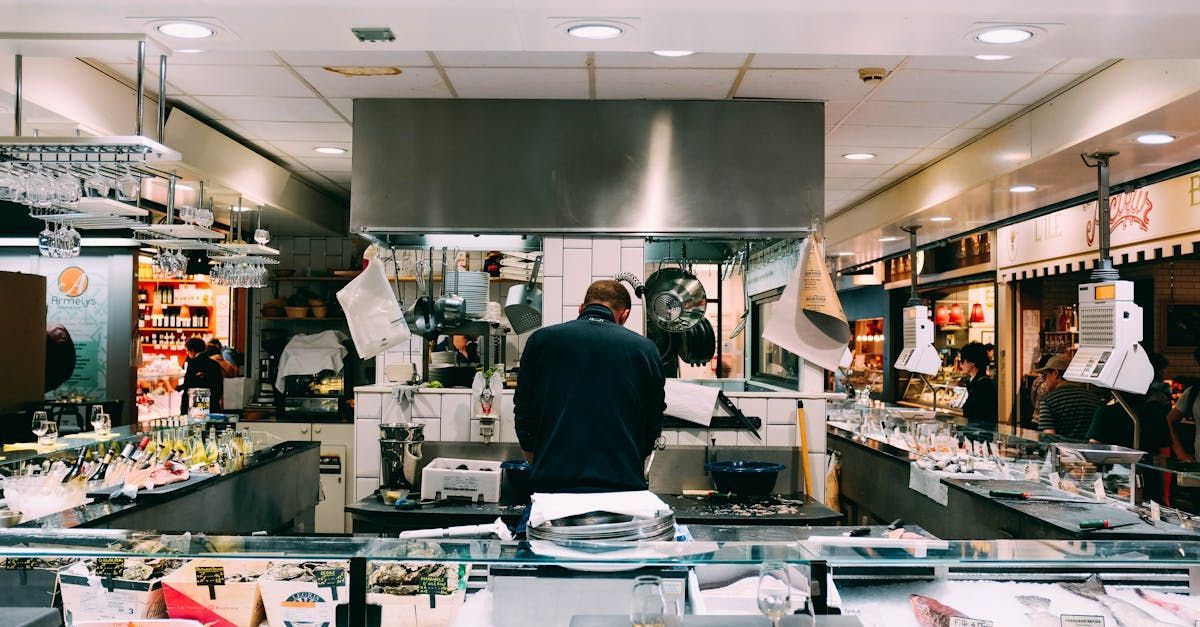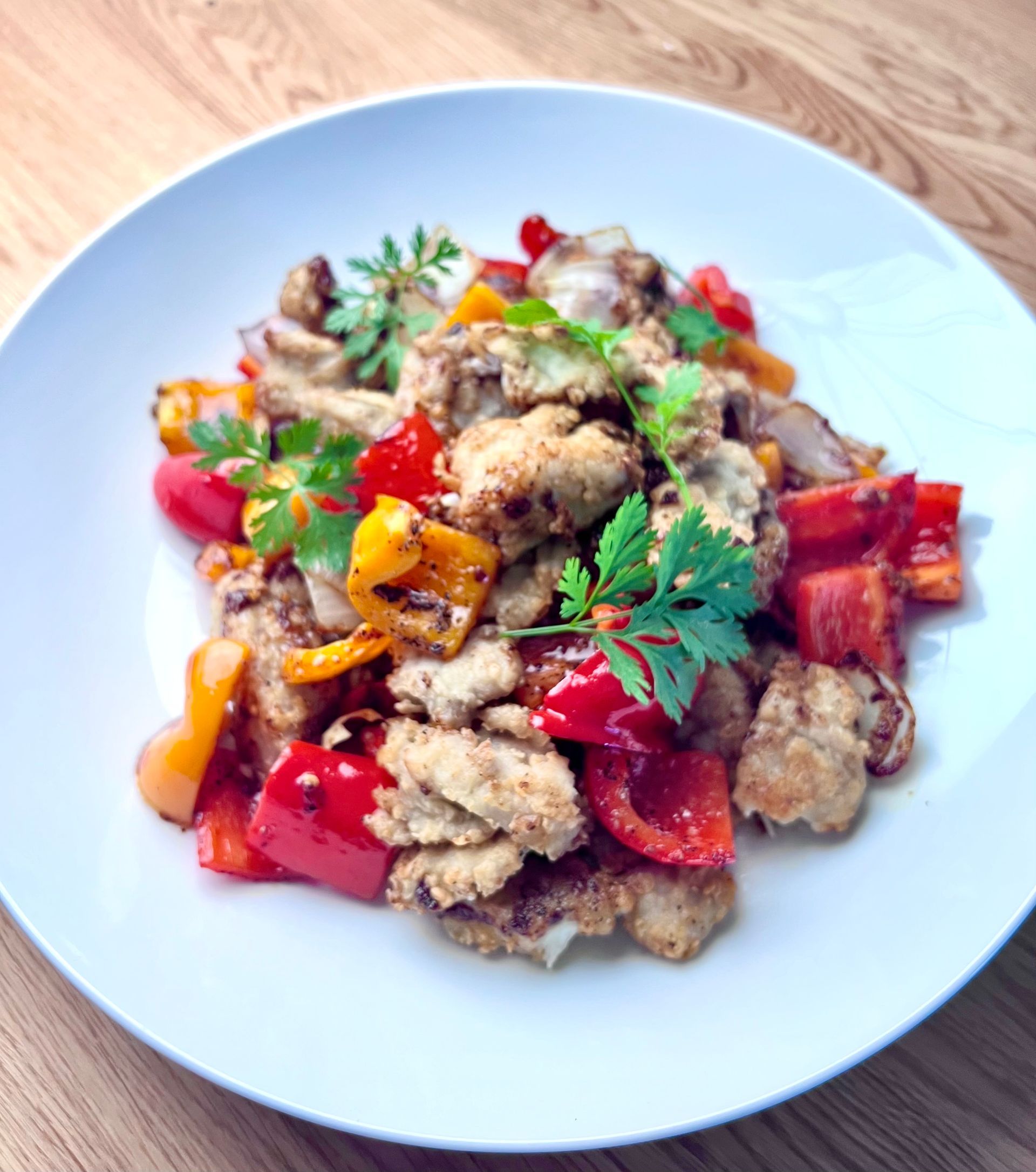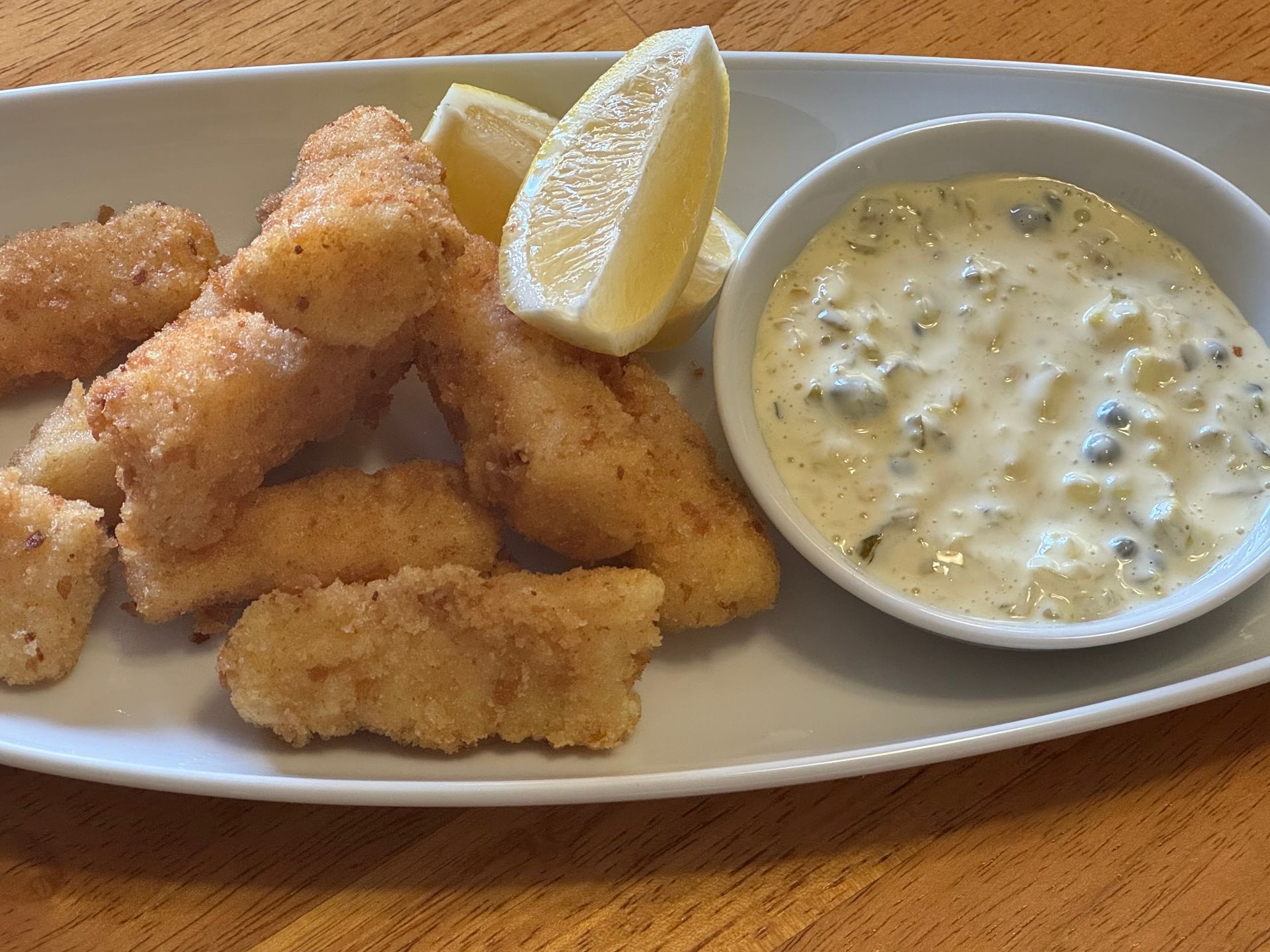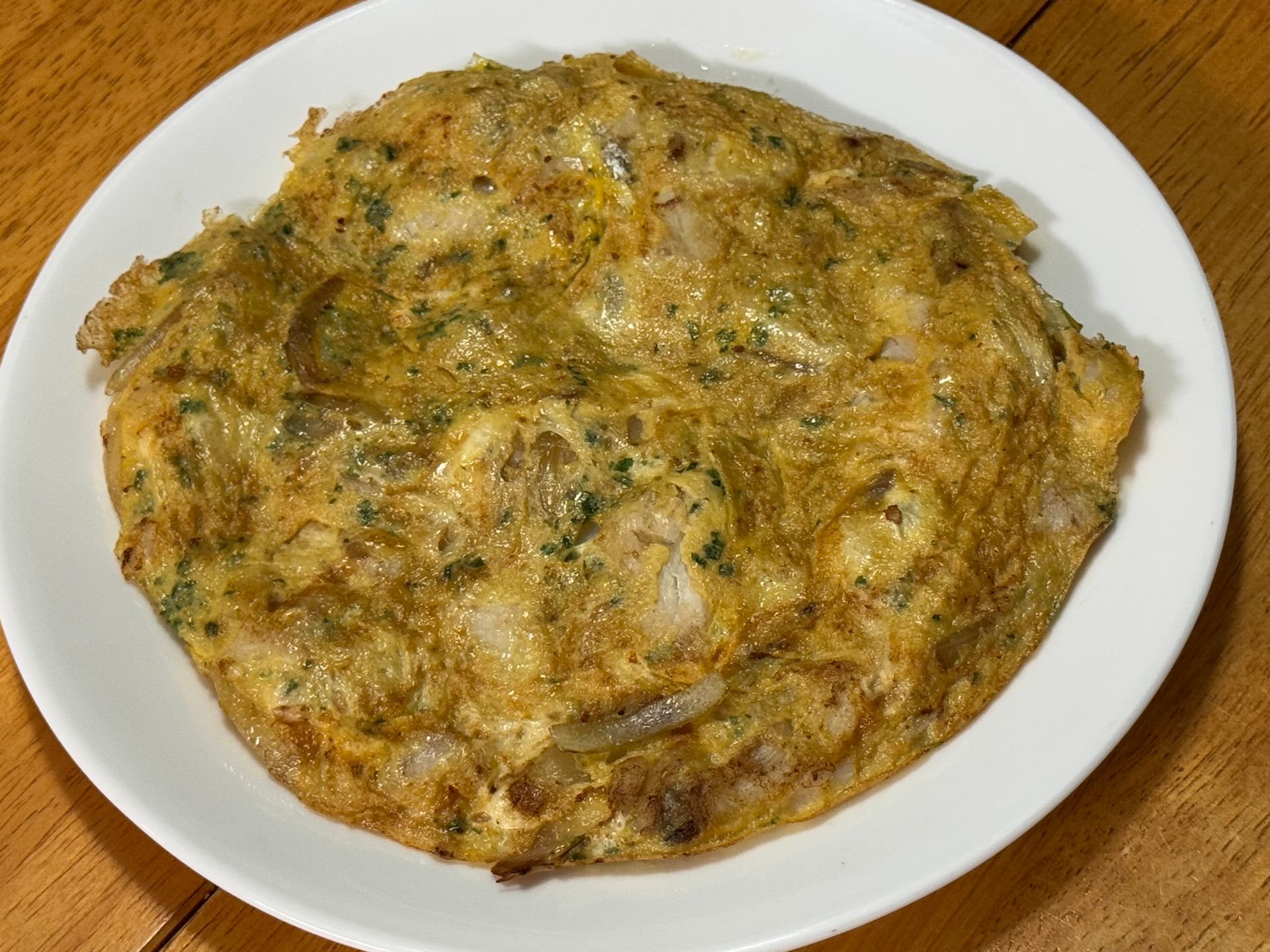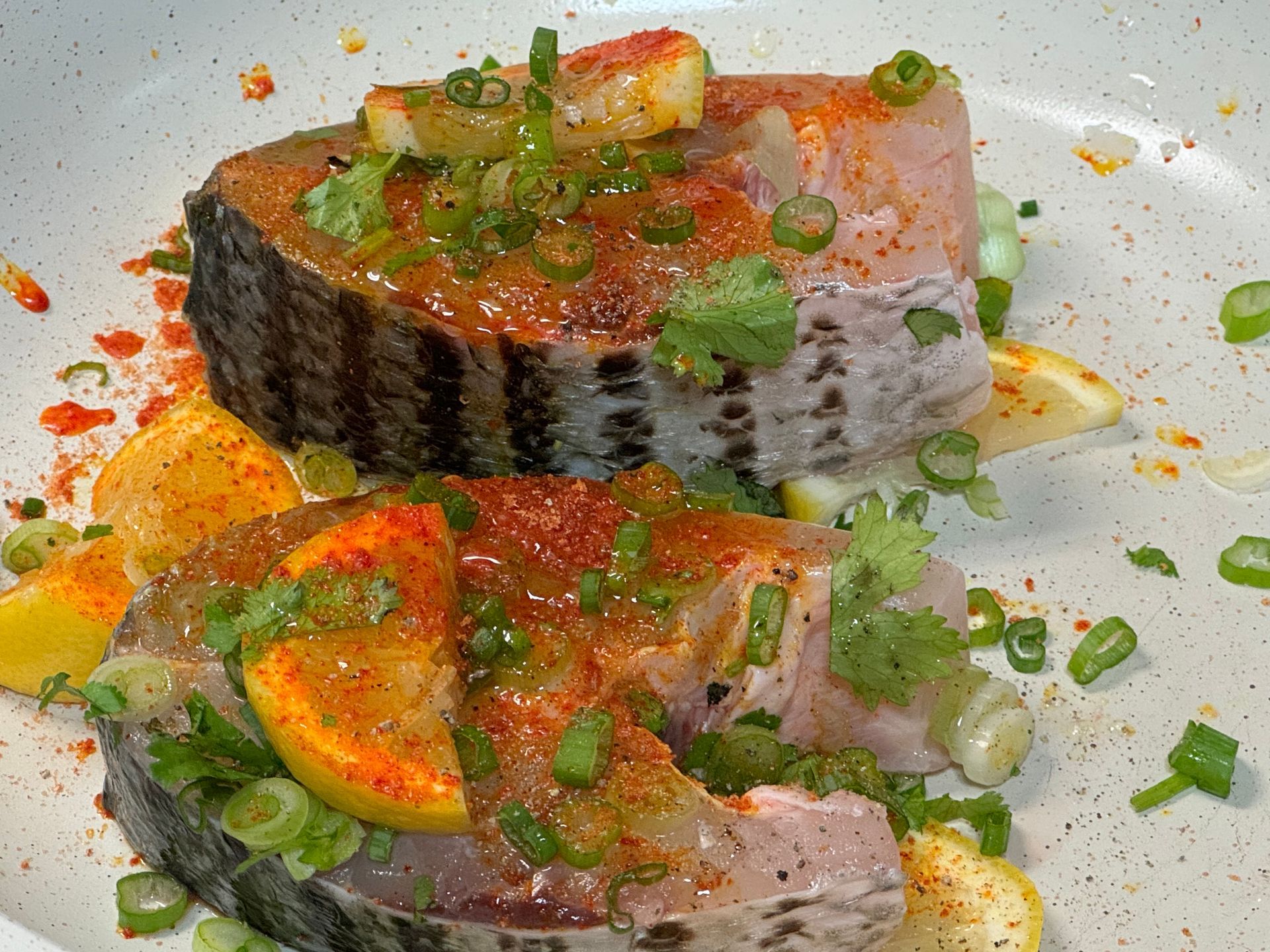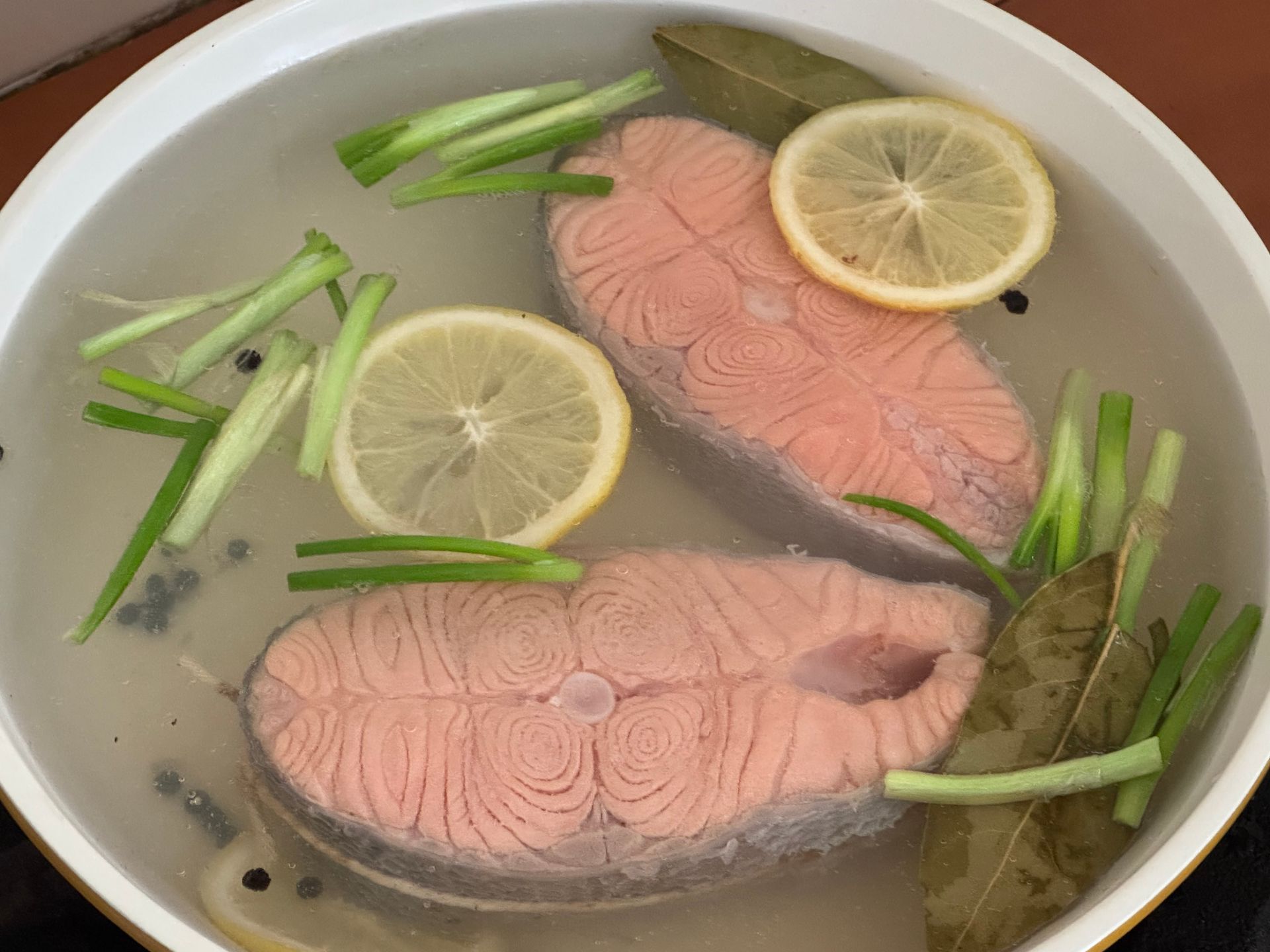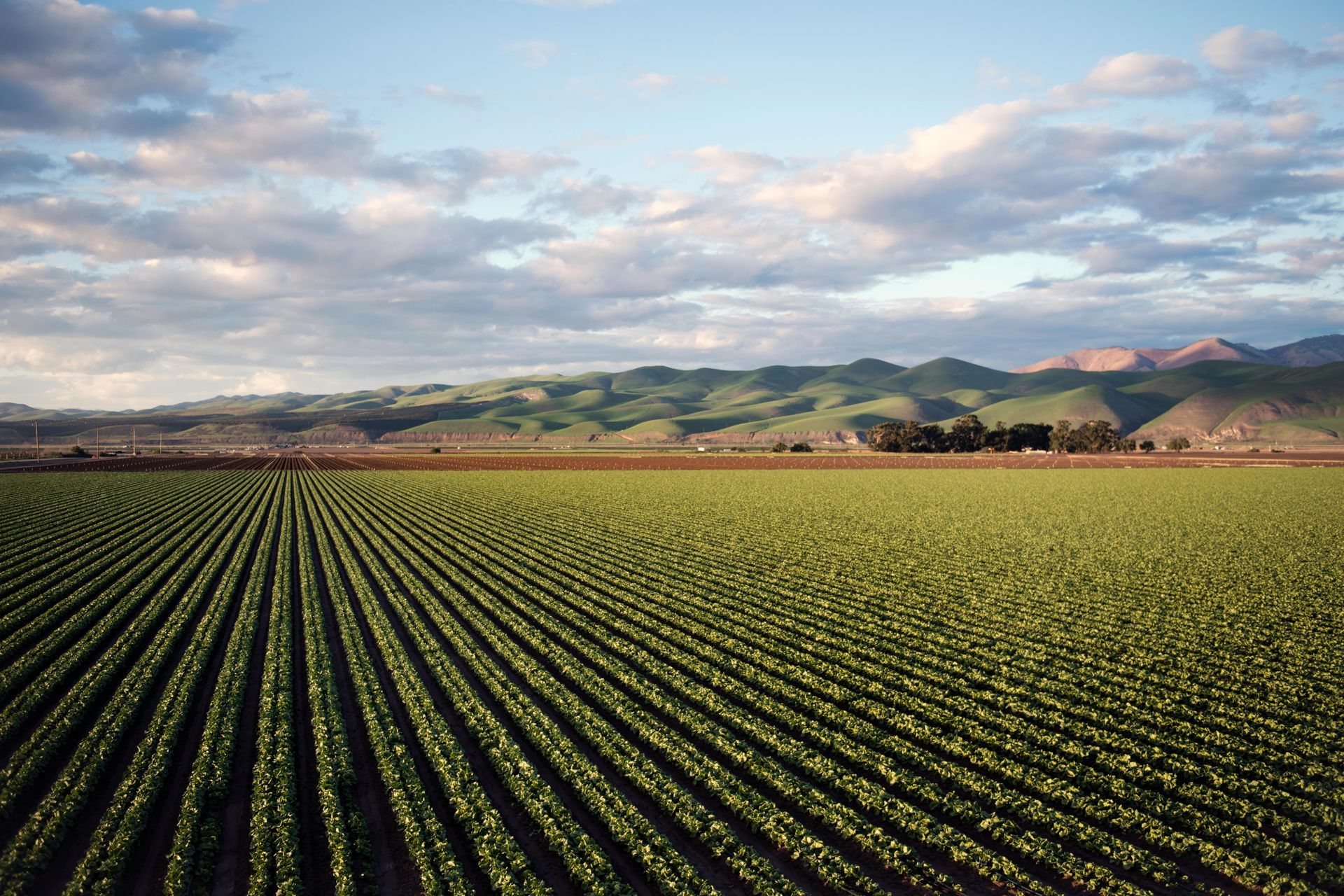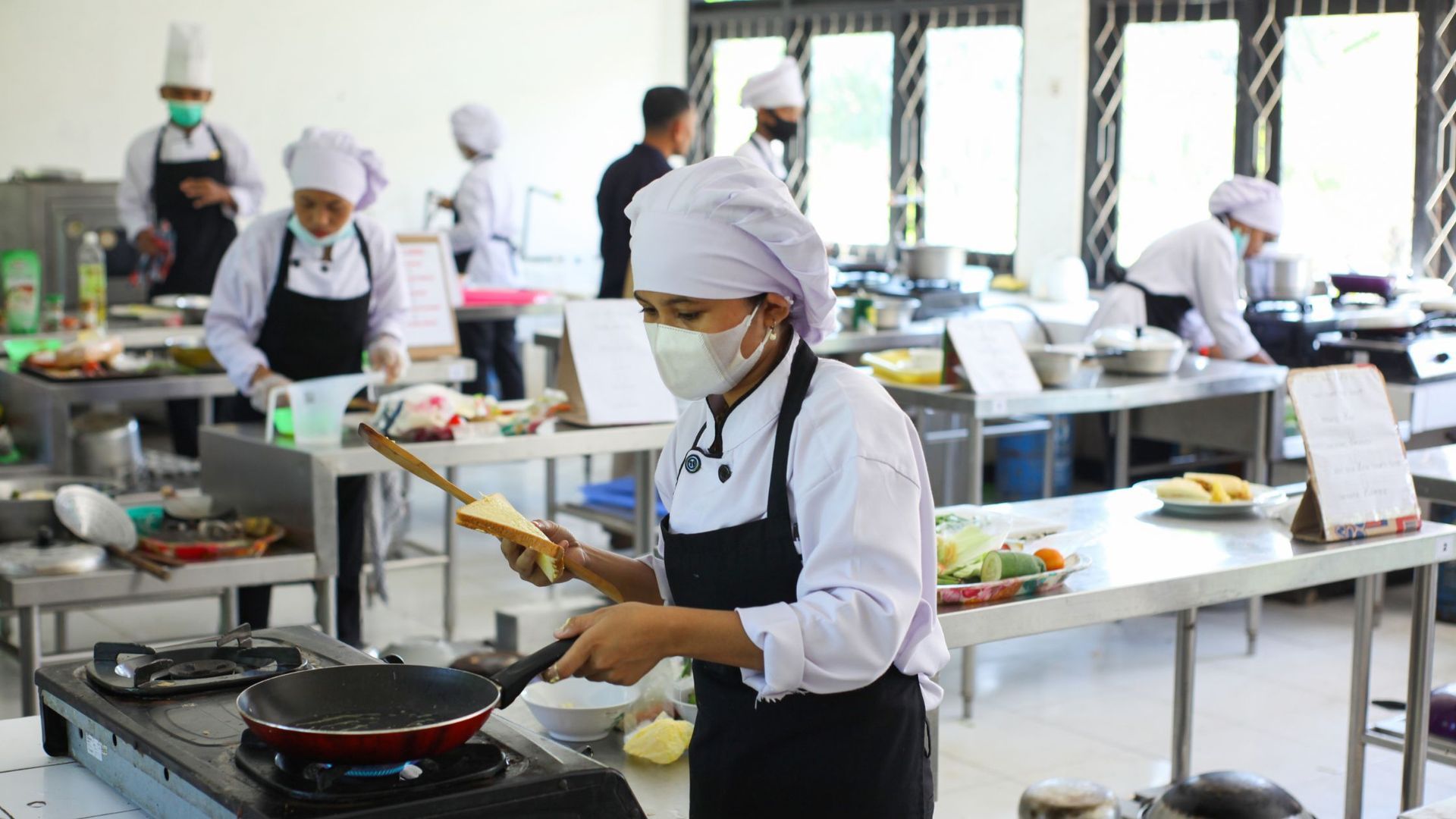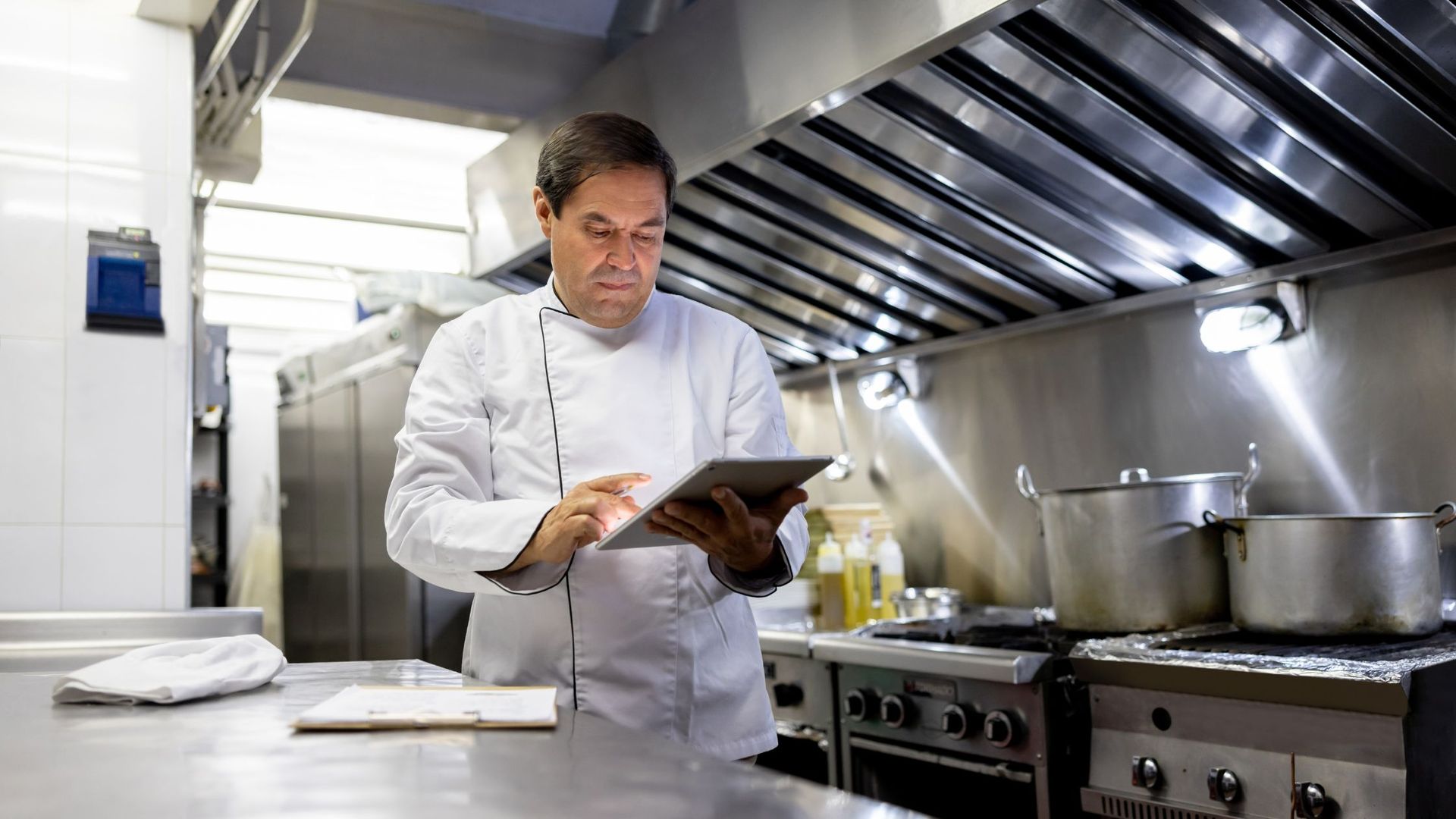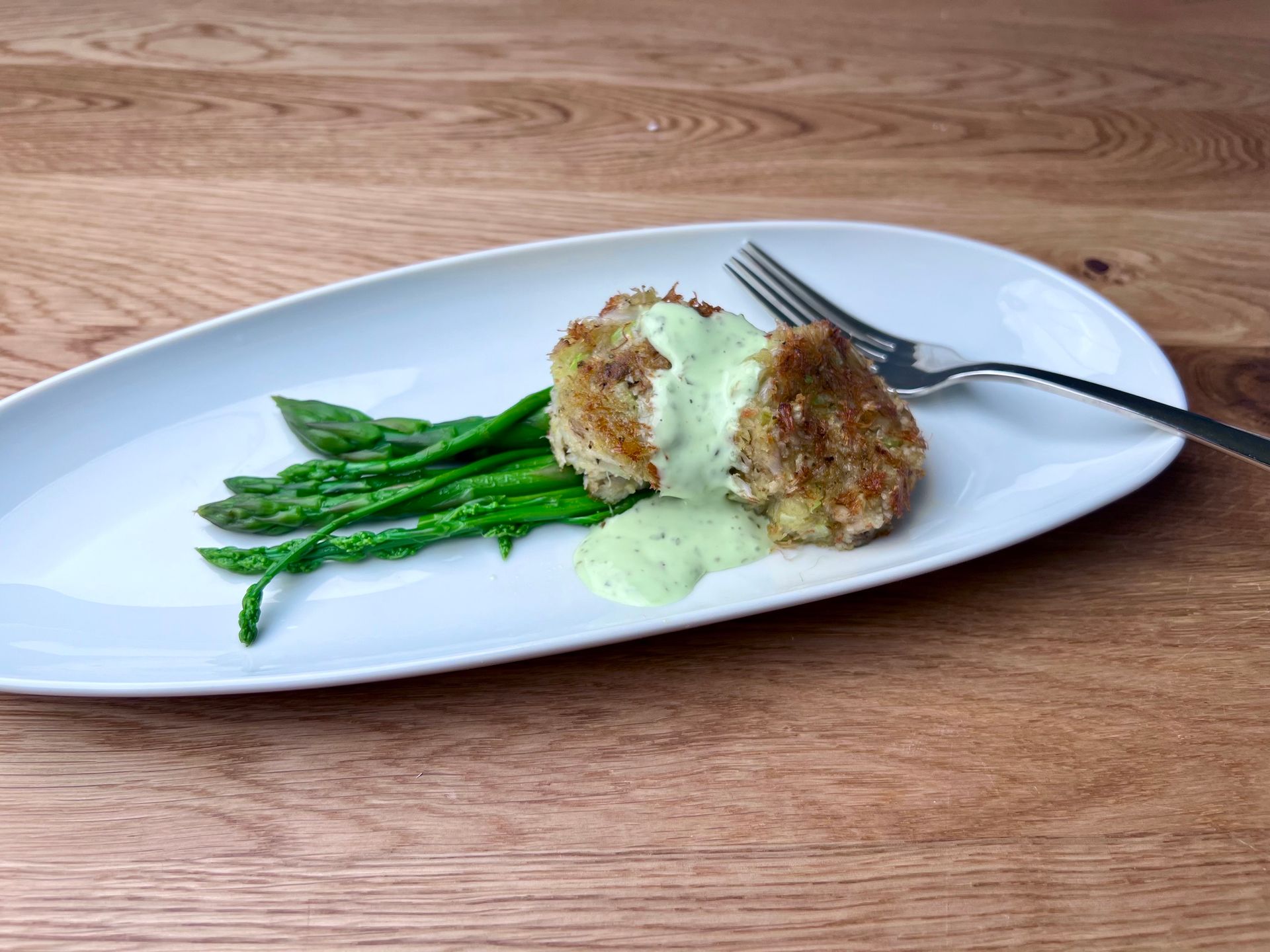
Most chefs make thousands of crab cakes in their career and eventually settle on their own 'secret weapon' crab cake recipe.
I haven't experienced too many exceptional crab cakes at restaurants-most have fillers, cheap crab meat, too much breading etc... so I simply make my own!
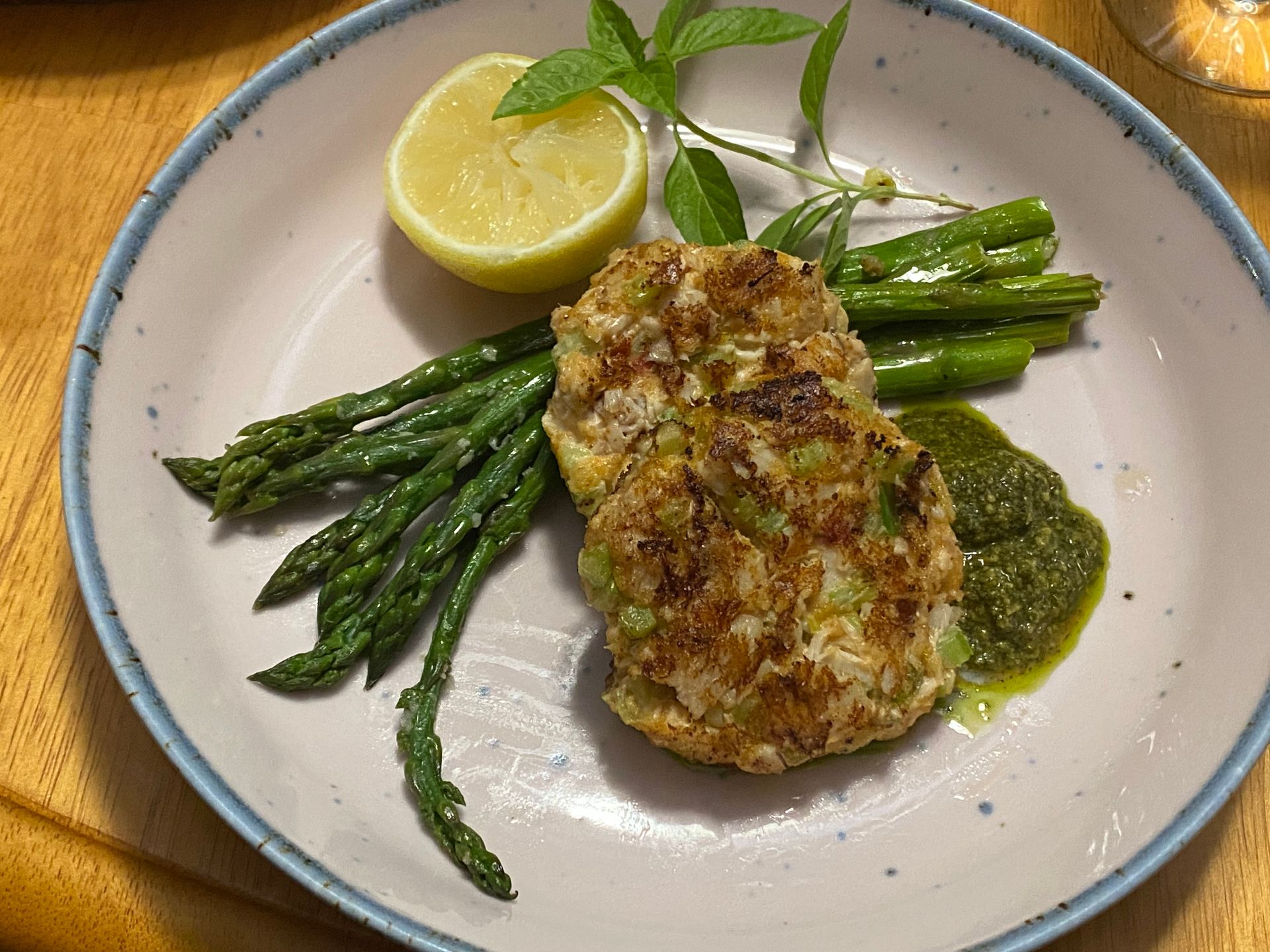
Fish cakes prepared with bluefish; mint & basil pesto
Crab Cakes & Fish Cakes
I think of crab or fish cakes in 'garde manger' terms... an exceptional, main ingredient, small amount of binder, garnish & seasoning. I usually prepare delicate crab cakes so I make them small & easy to pan fry and flip AND I serve them immediately upon cooking! Life changing...
New Paragraph
Prep Time: 3o min
Cooking Time: 20 min
Ingredients
Yield: 4 portions
Ingredients
1 1/2 lb Crab meat, picked or (codfish, fluke, bluefish etc…)
1 ea Egg, cracked & whisked
5 Tbsp Mayonnaise
1 Tbsp Dijon mustard
1 Tbsp Old bay
1 tsp Kosher Salt
.5 tsp Cayenne Pepper
3 Tbsp Celery, washed, peeled & minced
3 Tbsp Scallion, sliced very thin (white section only)
4 Tbsp Ritz Crackers, ground fine
3 Tbsp Panko
2 Tbsp Bacon, crumbled and crisp (optional)
2 Tbsp Red bell pepper, minced (optional)
1 qt Canola oil for frying
How to make Crab Cakes
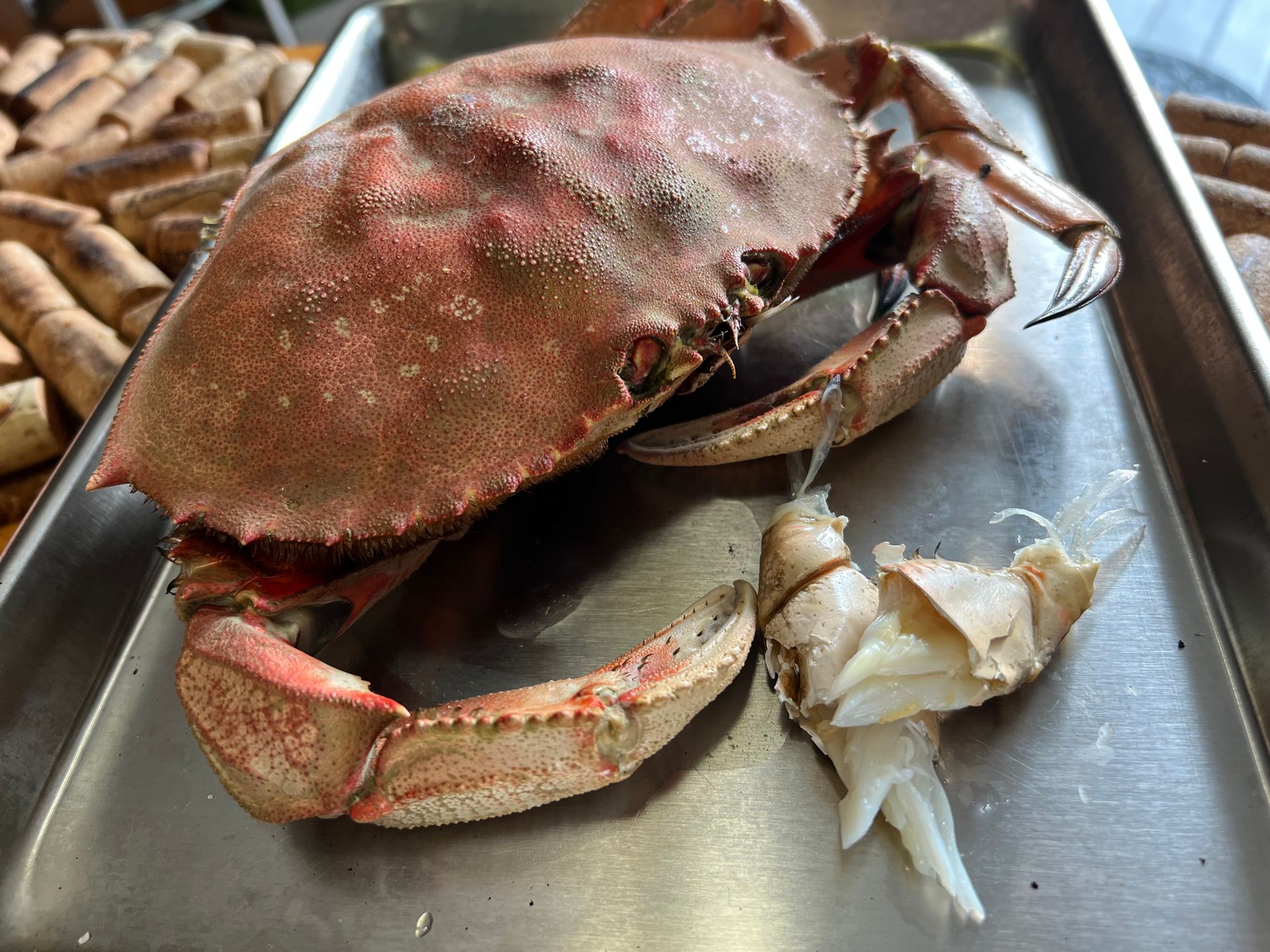
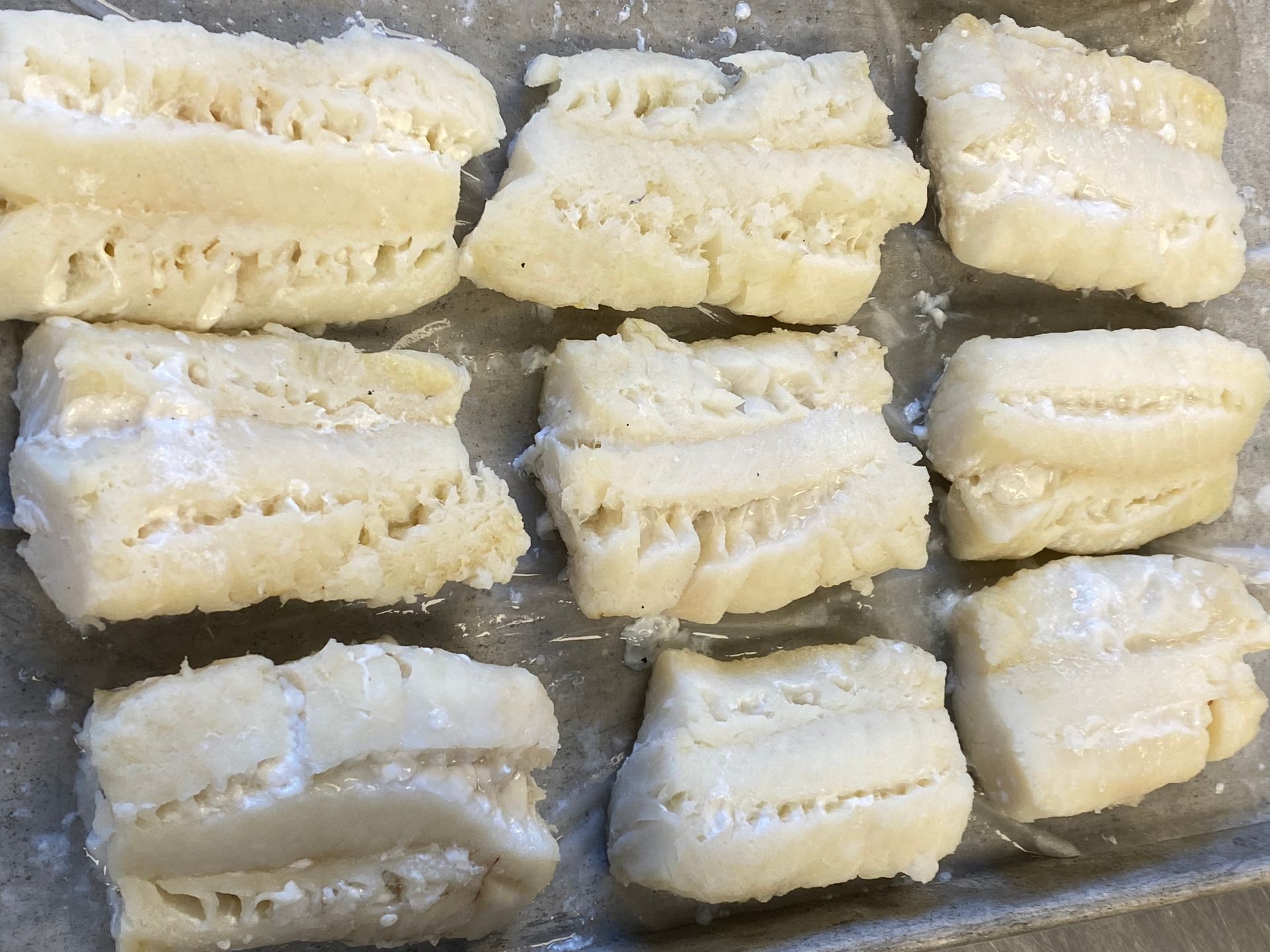
Step 1
Although it's simple to purchase a variety of different crabmeat products, cooking live crabs, cooling & picking the crabmeat produces a more delicious crab cake. I like baking the crabs to avoid extra moisture. If you prefer to use moist heat, simmer about 10 minutes in water w a bay leave and some peppercorns, then cool.
If making fish cakes, season & bake the seafood fillet until firm (145 °F about 8 minutes in 350 °F oven); cool and break or cut into a small dice. The fish in the picture is baked cod fillet.
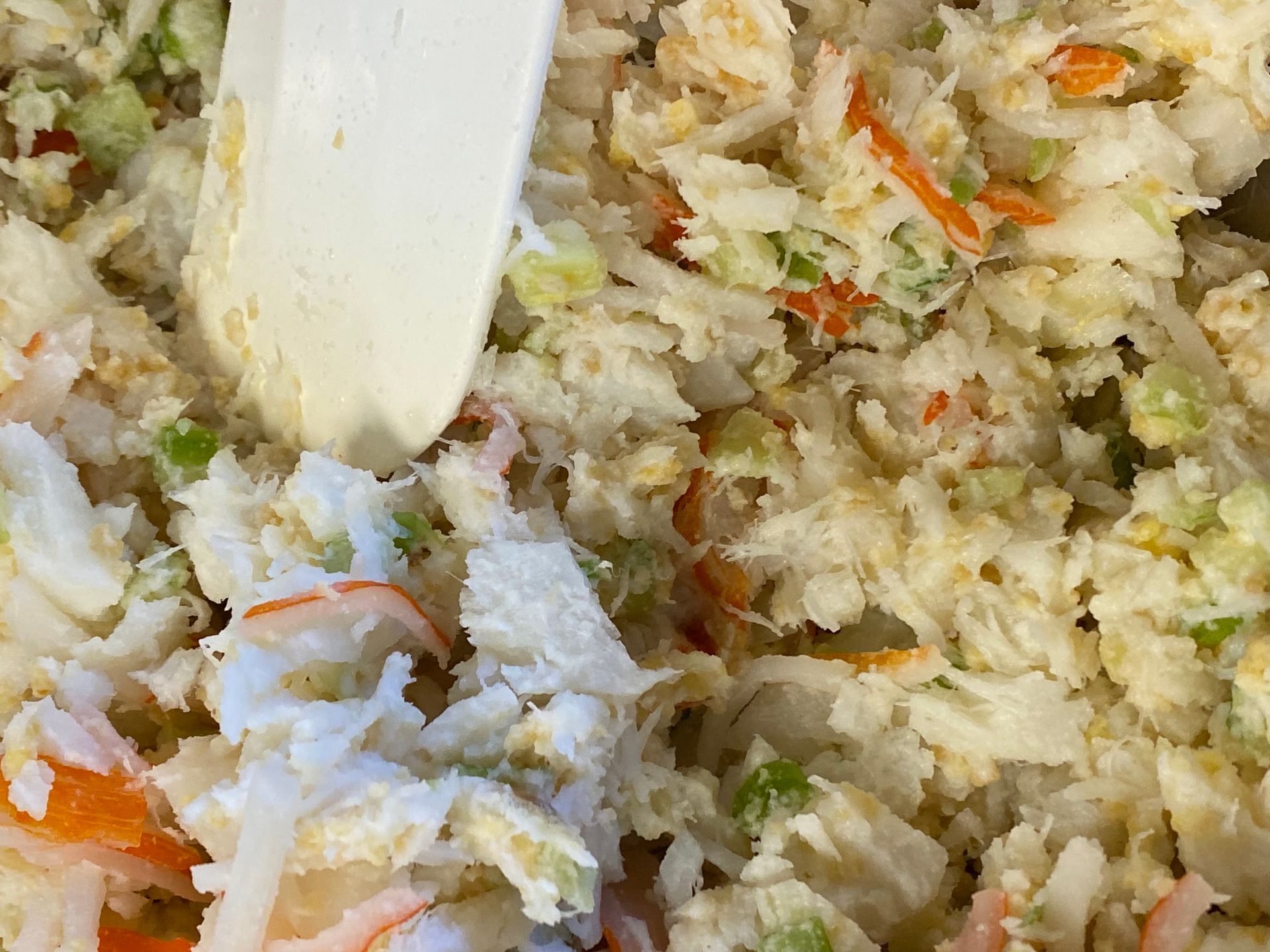
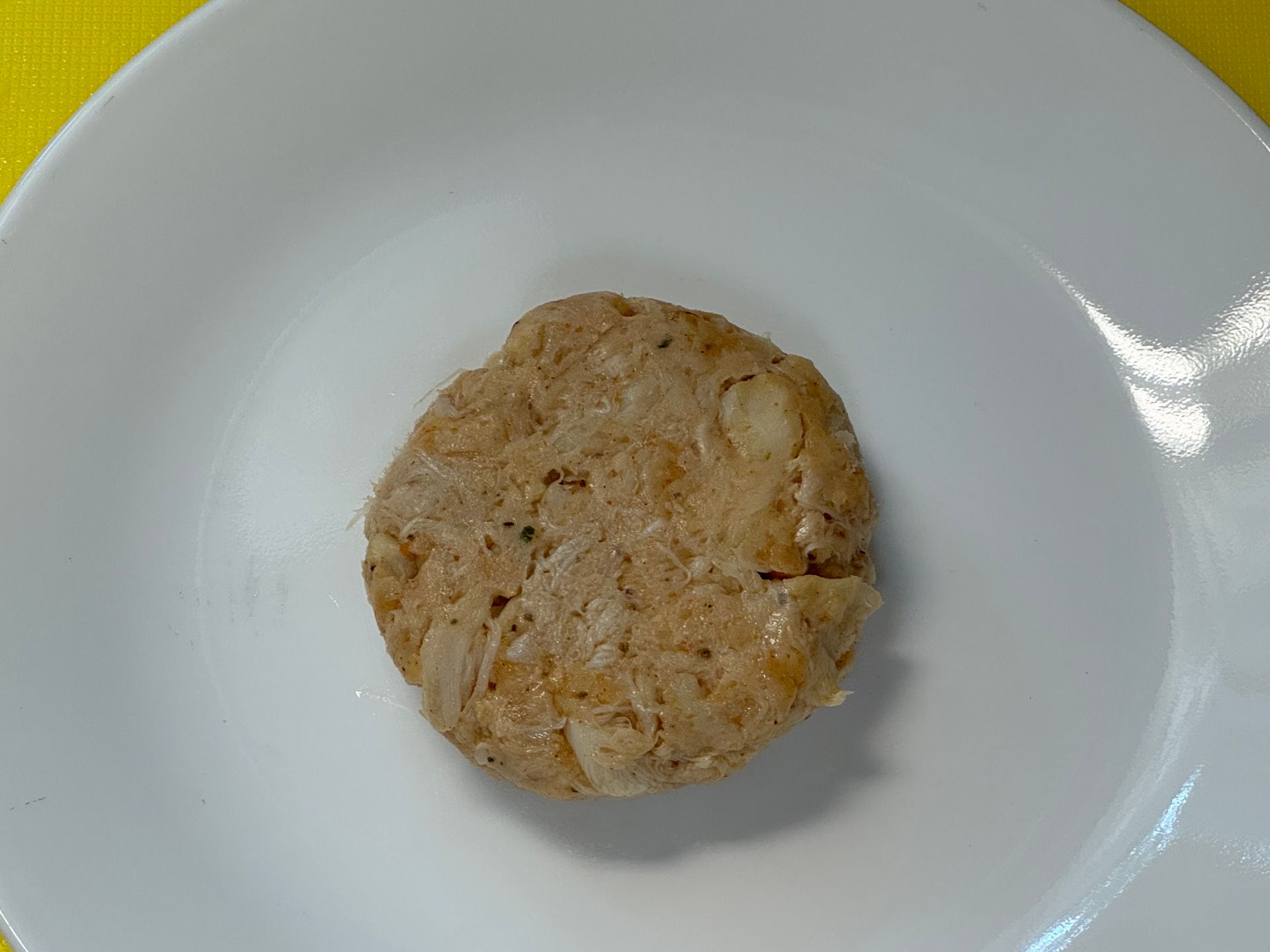
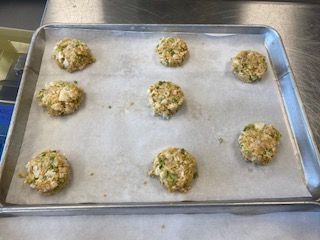
Step 2
Place the egg into a bowl, add the mayonnaise, mustard and seasonings; whisk to blend. Add the celery, scallion, crab meat, Ritz crackers and panko into the bowl, blend with a rubber spatula.
Use an ice cream scoop to form one small ball and fry as a 'taster'; evaluate seasoning and/or panko based upon the flavor and texture. Some types of crab meat have excess liquid and it purges into the mixture after a few minutes so you may need to add more panko, depending on which crab meat you choose to cook with.
When the crab cake flavor and texture is the way you like, form the remaining filling into 8 or 9 balls, laying each onto a parchment paper, lined tray. Flatten (I use a cookie cutter ring to make the cakes evenly round).
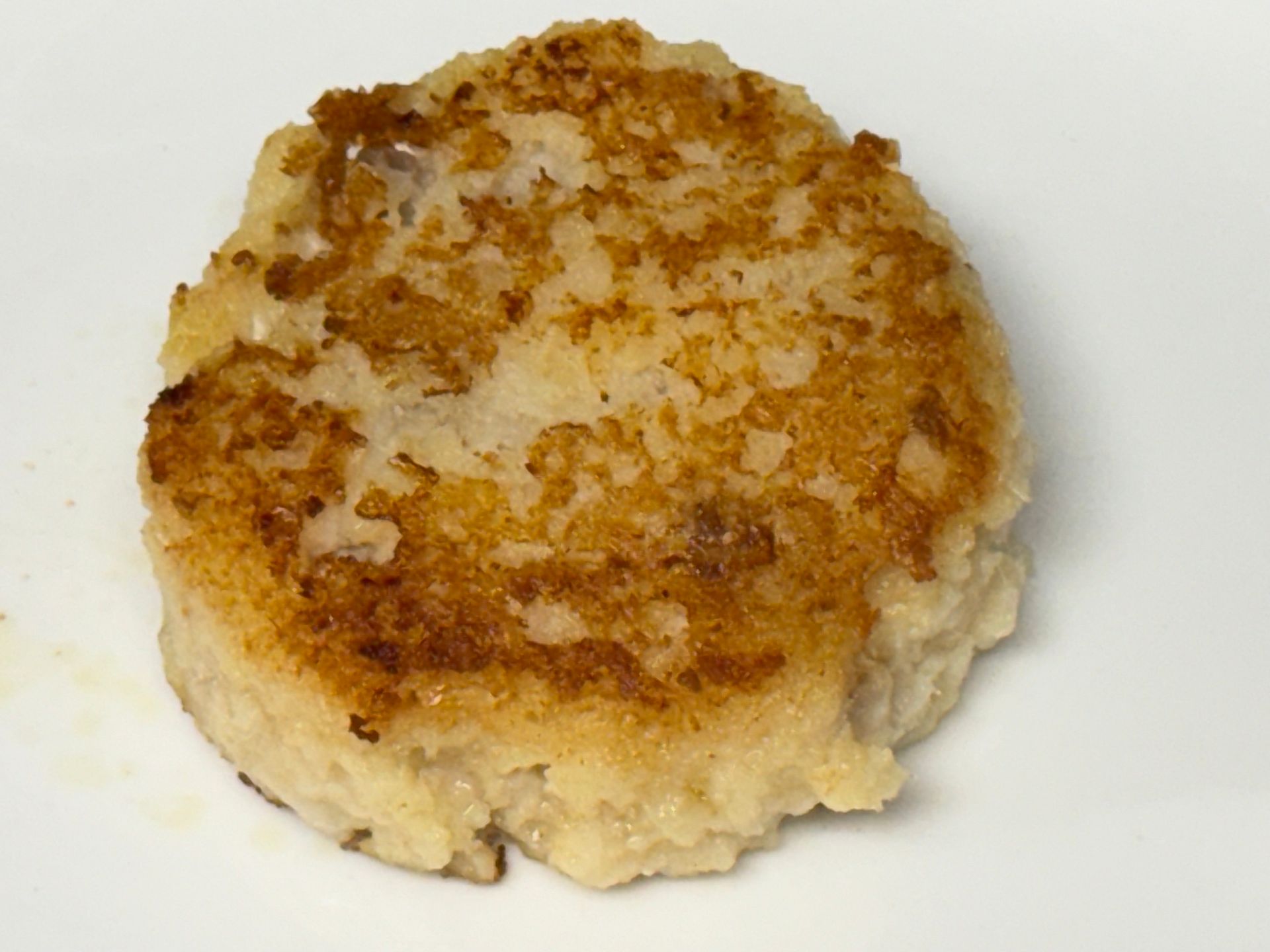
Step 3
Heat oil in an 8 inch sauteuse (this is a saute pan but with straight sides-not sloped sides, used for pan frying) There should be about 1/8th inch of oil in the pan. Pan fry 3 or 4 cakes at a time so you have room to flip the cakes with a spatula-I jiggle the pan so the cakes get evenly light brown.
I tilt the pan so that the hot oil is at one end, then carefully flip the cakes on the side of the pan with no oil so I don't splash hot oil.
I like to serve with a spicy tartar sauce and cole slaw.

